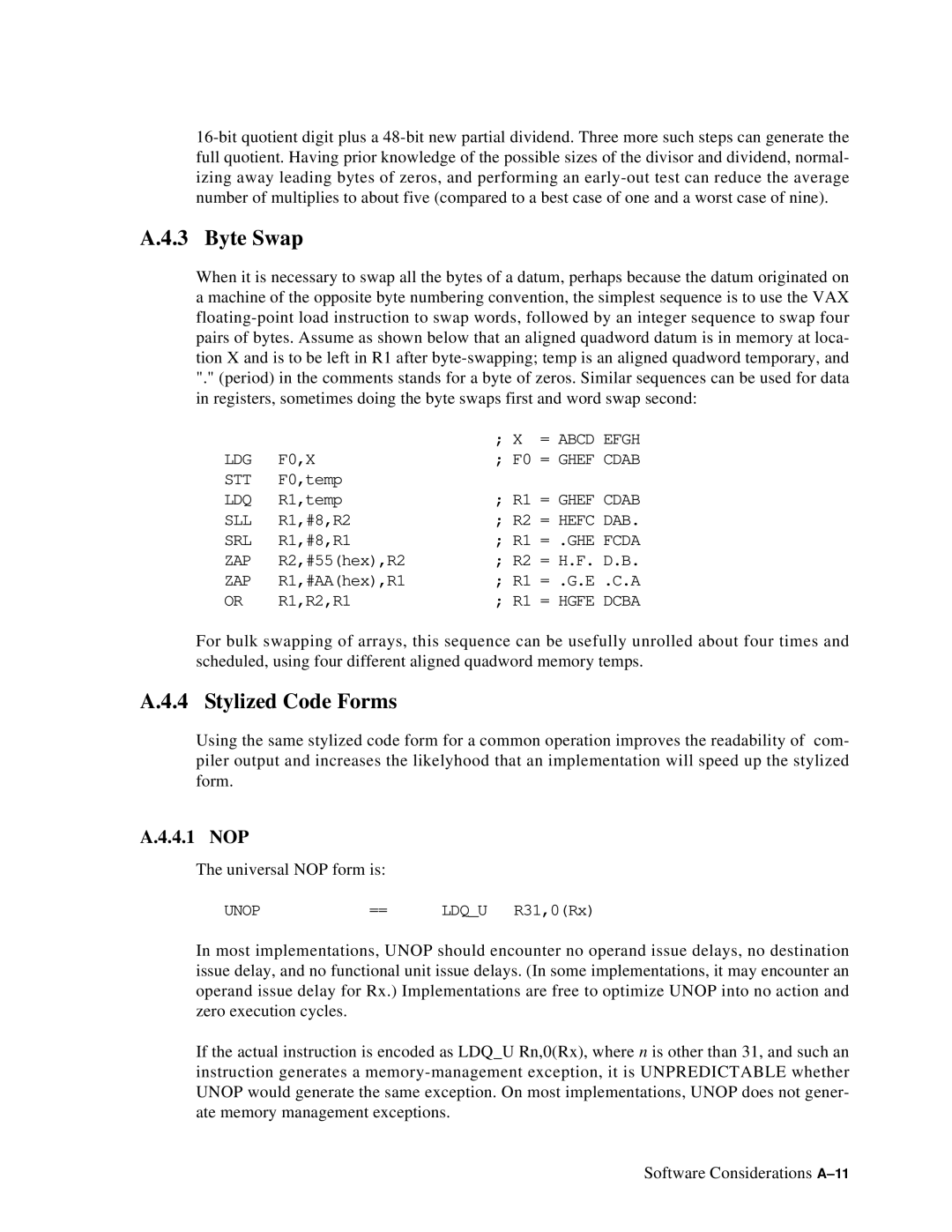A.4.3 Byte Swap
When it is necessary to swap all the bytes of a datum, perhaps because the datum originated on a machine of the opposite byte numbering convention, the simplest sequence is to use the VAX
"."(period) in the comments stands for a byte of zeros. Similar sequences can be used for data in registers, sometimes doing the byte swaps first and word swap second:
|
| ; X | = ABCD EFGH |
LDG | F0,X | ; F0 = GHEF CDAB | |
STT | F0,temp |
|
|
LDQ | R1,temp | ; R1 = GHEF CDAB | |
SLL | R1,#8,R2 | ; R2 = HEFC DAB. | |
SRL | R1,#8,R1 | ; R1 = .GHE FCDA | |
ZAP | R2,#55(hex),R2 | ; R2 | = H.F. D.B. |
ZAP | R1,#AA(hex),R1 | ; R1 | = .G.E .C.A |
OR | R1,R2,R1 | ; R1 | = HGFE DCBA |
For bulk swapping of arrays, this sequence can be usefully unrolled about four times and scheduled, using four different aligned quadword memory temps.
A.4.4 Stylized Code Forms
Using the same stylized code form for a common operation improves the readability of com- piler output and increases the likelyhood that an implementation will speed up the stylized form.
A.4.4.1 NOP
The universal NOP form is:
UNOP | == | LDQ_U R31,0(Rx) |
In most implementations, UNOP should encounter no operand issue delays, no destination issue delay, and no functional unit issue delays. (In some implementations, it may encounter an operand issue delay for Rx.) Implementations are free to optimize UNOP into no action and zero execution cycles.
If the actual instruction is encoded as LDQ_U Rn,0(Rx), where n is other than 31, and such an instruction generates a
Software Considerations
